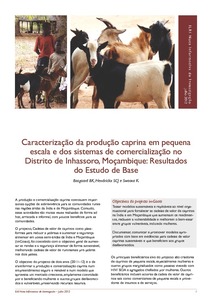Location
Vision, mission and strategy
ILRI's strategy 2013-2022 was approved in December 2012. It emerged from a wide processof consultation and engagement.
ILRI envisions... a world where all people have access to enough food and livelihood options to fulfil their potential.
ILRI’s mission is... to improve food and nutritional security and to reduce poverty in developing countries through research for efficient, safe and sustainable use of livestock—ensuring better lives through livestock.
ILRI’s three strategic objectives are:
- with partners, to develop, test, adapt and promote science-based practices that—being sustainable and scalable—achieve better lives through livestock.
- with partners,to provide compelling scientific evidence in ways that persuade decision-makers—from farms to boardrooms and parliaments—that smarter policies and bigger livestock investments can deliver significant socio-economic, health and environmental dividends to both poor nations and households.
- with partners,to increase capacity among ILRI’s key stakeholders to make better use of livestock science and investments for better lives through livestock.
This is ILRI’s second ten-year strategy. It incorporates a number of changes, many based on learning from the previous strategy (2000–2010, initially produced in 2000 and modified in 2002), an interim strategy (2011–2012) and an assessment of the external and internal environments in which the institute operates.
Members:
Resources
Displaying 526 - 530 of 1152Caracterização da produção caprina em pequena escala e dos sistemas de comercialização no Distrito de Inhassoro, Moçambique: Resultados do Estudo de Base
Report of the sixth meeting of the imGoats Inhassoro Innovation Platform (IP), Maimelane, Mozambique, 26 July 2012
Characterization of smallholder goat production and marketing systems in Inhassoro District, Mozambique: Results of a baseline study
Mapping of poverty and likely zoonoses hotspots
The objective of this report is to present data and expert knowledge on poverty and zoonoses hotspots to inform prioritisation of study areas on the transmission of disease in emerging livestock systems in the developing world, where prevention of zoonotic disease might bring greatest benefit to poor people.
LEARNING ROUTE: NAIROBI TO ARUSHA, FEBRUARY 2012
INDEX 2.0 RECENT EVENTS 3.0 PROTECTING LIVESTOCK MOBILITY ROUTES: LESSONS LEARNED 4.0 KENYA’S CONSTITUTION 2010 What will it mean for tenure security in rangelands? ‘Equal rights for women’ say Maasai elders 5.0 CAN VILLAGE LAND USE PLANNING WORK FOR RANGELANDS? 6.0 PROTECTING RIGHTS OF HUNTER-GATHERERS IN TANZANIA 7.0 OTHER NEWS FROM THE REGION Improving rangeland quality through land use planning Developing policies in Uganda 8.0 LAUNCH OF RANGELAND OBSERVATORY






